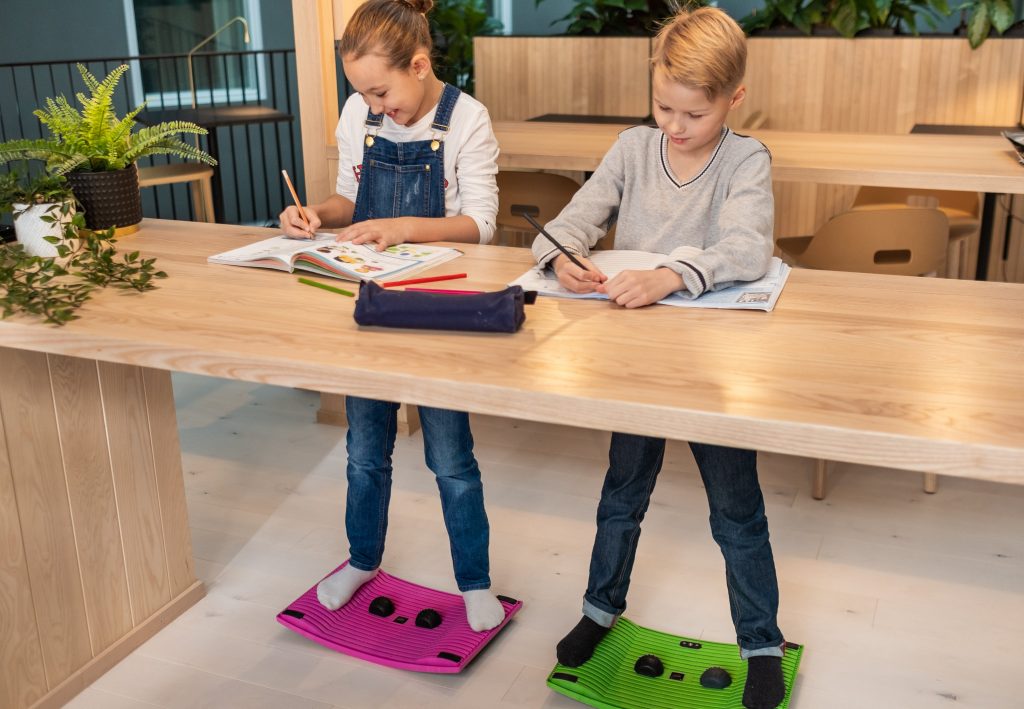Poor classroom posture in students can lead to significant long-term effects including chronic musculoskeletal problems, reduced cognitive function, and psychological impacts. Extended periods of slouching, hunching, or improper sitting during formative years can result in lasting postural issues, back and neck pain, reduced concentration, and even lower self-confidence. These issues often persist into adulthood, potentially affecting career prospects and quality of life. Addressing classroom ergonomics through proper furniture, regular movement breaks, and posture awareness training is essential for preventing these long-term complications.
Understanding poor classroom posture and its importance for students
Poor classroom posture has become increasingly common as students spend more time seated at desks, often in furniture that doesn’t match their body proportions. The typical classroom setting frequently involves students hunching over desks, craning their necks to view screens, or slouching in chairs that are too large or small for their frames.
Modern educational environments contribute to these problems through extended screen time, heavy backpacks, and furniture designed for convenience rather than ergonomic support. Many students spend 6-8 hours daily in these static positions during critical physical development stages.
Addressing posture problems in educational settings is crucial because childhood and adolescence represent the most formative periods for developing movement patterns and skeletal alignment. Habits formed during these years tend to become ingrained, making them much harder to correct later in life. Poor posture isn’t merely a cosmetic concern—it sets the stage for numerous physical, cognitive, and psychological challenges that can impact students’ overall development and future well-being.
How does poor classroom posture affect physical development in growing students?
Poor classroom posture significantly impacts physical development in growing students, potentially leading to lasting musculoskeletal changes. When young bodies are consistently held in improper positions during critical growth periods, the developing spine and surrounding structures adapt to these unnatural alignments.
The most common physical effects include:
- Forward head posture, which places excessive strain on the neck muscles and can lead to tension headaches
- Rounded shoulders and upper back (kyphosis), affecting chest expansion and proper breathing
- Increased lumbar curve or flattened lower back, contributing to lower back pain
- Asymmetrical muscle development, where some muscles become overly tight while others weaken
These postural deviations can lead to chronic pain patterns that follow students into adulthood. Research suggests that childhood posture habits are strongly predictive of adult postural problems. Additionally, poor alignment during growth spurts can potentially influence bone development, especially in the spine, potentially contributing to scoliosis or other growth abnormalities in predisposed individuals.
The physical impacts extend beyond the spine to affect overall body mechanics, potentially limiting range of motion, decreasing physical resilience, and establishing movement patterns that increase vulnerability to future injuries.
Can poor posture in the classroom impact students’ academic performance?
Yes, poor posture in the classroom can significantly impact students’ academic performance through several interconnected mechanisms. When students sit in slouched or hunched positions, it directly affects their ability to learn and engage with educational material.
Poor posture restricts proper breathing by compressing the diaphragm and lungs, reducing oxygen intake. This decreased oxygenation directly impacts brain function, as the brain requires approximately 20% of the body’s oxygen supply to operate optimally. Students with compromised posture often experience quicker mental fatigue and diminished cognitive processing abilities.
Additionally, maintaining poor posture requires the body to work harder to hold itself against gravity. This unnecessary energy expenditure diverts resources that could otherwise support mental functions, leading to earlier onset of tiredness and reduced attention spans during lessons.
Research has shown connections between posture and specific cognitive functions, including:
- Reduced concentration and focus
- Decreased information retention
- Compromised problem-solving abilities
- Lower levels of classroom participation
When students are physically uncomfortable, their attention naturally shifts to their discomfort rather than the learning material, creating a continuous distraction that undermines academic engagement and performance.
What are the psychological effects of long-term poor posture in students?
Long-term poor posture can have profound psychological effects on students that extend well beyond physical discomfort. Our body positioning directly influences our mental and emotional states through both physiological pathways and social perception.
Students who consistently maintain slouched or collapsed postures often experience lower self-confidence and reduced feelings of competence. Research in embodied cognition demonstrates that physical posture influences hormone production—slumped postures increase cortisol (stress hormone) levels while decreasing testosterone and serotonin, which affect mood regulation and assertiveness.
Social perception also plays a crucial role in these psychological effects. Students with poor posture may be perceived by peers and teachers as less engaged, less intelligent, or less motivated, regardless of their actual abilities. These external judgments can become internalized over time, affecting how students view themselves and their capabilities.
Other psychological impacts include:
- Negative body image and self-consciousness
- Increased vulnerability to anxiety and depression
- Diminished willingness to participate in class discussions
- Reduced sense of personal agency and control
When maintained throughout formative educational years, these psychological effects can become deeply ingrained aspects of identity that follow students into adulthood, potentially limiting social and professional opportunities.
How can schools improve classroom ergonomics to prevent posture problems?
Schools can implement several effective strategies to improve classroom ergonomics and prevent posture-related problems among students. Creating supportive physical environments is essential for developing healthy postural habits during formative years.
The most impactful approach begins with age-appropriate furniture that accommodates different body sizes. Adjustable chairs and ergonomic desks for proper student alignment allow proper alignment where students can sit with feet flat on the floor, knees at right angles, and desks at elbow height. Some progressive schools are introducing standing desks or alternative seating options that encourage natural movement and position changes.
Effective ergonomic improvements include:
- Implementing regular movement breaks (2-3 minutes every 30 minutes)
- Creating classroom layouts that require students to change positions
- Providing book stands to reduce neck flexion when reading
- Positioning digital screens at eye level to prevent forward head posture
- Reducing backpack weight or providing storage solutions for heavy materials
Education plays a crucial role too. Schools can integrate posture awareness into health curriculum, teaching students to recognize proper alignment and understand its importance. Teacher training should include how to observe and gently correct student posture without causing embarrassment.
These interventions are most effective when implemented school-wide with administrative support and when they become integrated into the school culture rather than treated as one-time initiatives.
Key takeaways: Creating healthier posture habits for lifelong benefits
Addressing posture issues early in a student’s educational journey creates a foundation for healthier development and can prevent many physical and psychological challenges later in life. The habits formed during school years tend to persist, making early intervention particularly valuable.
For parents, regular check-ins about comfort during homework and study time can reveal developing posture issues. Creating an ergonomic home study environment with proper lighting, adjustable laptop stands for proper viewing, and supportive seating makes a significant difference in establishing healthy habits. Encouraging regular movement and limiting extended screen time also supports better posture development.
Educators can incorporate “posture moments” into daily routines, using gentle reminders and creating classroom cultures where movement is normalized rather than discouraged. Simple awareness techniques, like having students periodically check their sitting position against a mental checklist, can build lasting body awareness.
At Gymba, we understand the importance of supporting proper posture from an early age. Our ergonomic solutions are designed to encourage natural movement while working or studying, helping to counteract the effects of prolonged static postures. By investing in proper ergonomic support and active movement boards for classroom settings, we can help students develop habits that will serve them throughout their lives—supporting better learning now and healthier bodies in the future.

